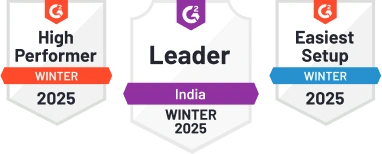Key Responsibility Areas (KRA) & Key Performance Indicators (KPI) for Purchase Department Specialist
1. Procurement Management
KRA: Ensure efficient sourcing and purchasing of goods and services to meet organizational needs.
Short Description: Procurement and sourcing optimization.
- Vendor Performance Evaluation
- Cost Savings Percentage
- On-time Delivery Rate
- Inventory Turnover Ratio
2. Contract Negotiation
KRA: Negotiate favorable terms and conditions with suppliers to secure cost-effective contracts.
Short Description: Strategic contract negotiations.
- Contract Value Savings
- Contract Compliance Rate
- Supplier Relationship Improvement Index
- Negotiation Success Rate
3. Supplier Relationship Management
KRA: Develop and maintain positive relationships with suppliers to ensure quality and timely deliveries.
Short Description: Supplier collaboration and management.
- Supplier Performance Scorecard
- Supplier Response Time
- Quality Acceptance Rate
- Supplier Innovation Index
4. Cost Control
KRA: Monitor and control procurement costs to optimize expenses and maximize savings.
Short Description: Cost management and reduction.
- Cost Reduction Percentage
- Procurement Budget Variance
- Cost Per Purchase Order
- Cost Avoidance Amount
5. Inventory Management
KRA: Ensure efficient inventory levels to meet demand while minimizing carrying costs and stockouts.
Short Description: Inventory optimization and control.
- Inventory Turnover Rate
- Stockout Rate
- Holding Cost Reduction
- Days Sales of Inventory (DSI)
6. Compliance and Risk Management
KRA: Ensure procurement activities comply with regulations and mitigate procurement-related risks.
Short Description: Regulatory compliance and risk mitigation.
- Regulatory Compliance Rate
- Risk Mitigation Effectiveness
- Contractual Risk Assessment
- Audit Findings Resolution
7. Process Improvement
KRA: Continuously improve procurement processes to enhance efficiency and effectiveness.
Short Description: Process optimization and enhancement.
- Process Cycle Time Reduction
- Process Cost Efficiency Improvement
- Process Automation Implementation
- Process Error Rate Reduction
8. Data Analysis and Reporting
KRA: Analyze procurement data and generate insightful reports to support decision-making and performance evaluation.
Short Description: Data-driven insights and reporting.
- Procurement Spend Analysis Accuracy
- Report Timeliness
- Data Quality Assurance
- Decision-making Impact
9. Team Collaboration
KRA: Collaborate with cross-functional teams to ensure alignment and support for procurement initiatives.
Short Description: Interdepartmental collaboration.
- Team Satisfaction Index
- Project Alignment Rate
- Knowledge Sharing Effectiveness
- Collaboration Success Metrics
10. Continuous Learning and Development
KRA: Engage in ongoing learning and development activities to enhance procurement knowledge and skills.
Short Description: Professional growth and skill enhancement.
- Training Completion Rate
- Procurement Certification Achievement
- Skill Development Progression
- Industry Best Practices Adoption
Real-Time Example of KRA & KPI
Real-World Example: Negotiating Favorable Contracts
KRA: Successfully negotiating contracts with suppliers to secure a 10% cost reduction on annual procurement spending.
- KPI 1: Contract Value Savings of 10%
- KPI 2: Contract Compliance Rate above 95%
- KPI 3: Supplier Relationship Improvement Index of 8/10
- KPI 4: Negotiation Success Rate of 90%
This example demonstrates how effective contract negotiation KPIs led to significant cost savings and strengthened supplier relationships.
Key Takeaways
- KRA defines what needs to be done, whereas KPI measures how well it is done.
- KPIs should always be SMART (Specific, Measurable, Achievable, Relevant, Time-bound).
- Regular tracking and adjustments ensure success in the Purchase Department Specialist role.
Content generated in a structured format with clear, concise, and measurable KPIs for professional readability and SEO optimization.







